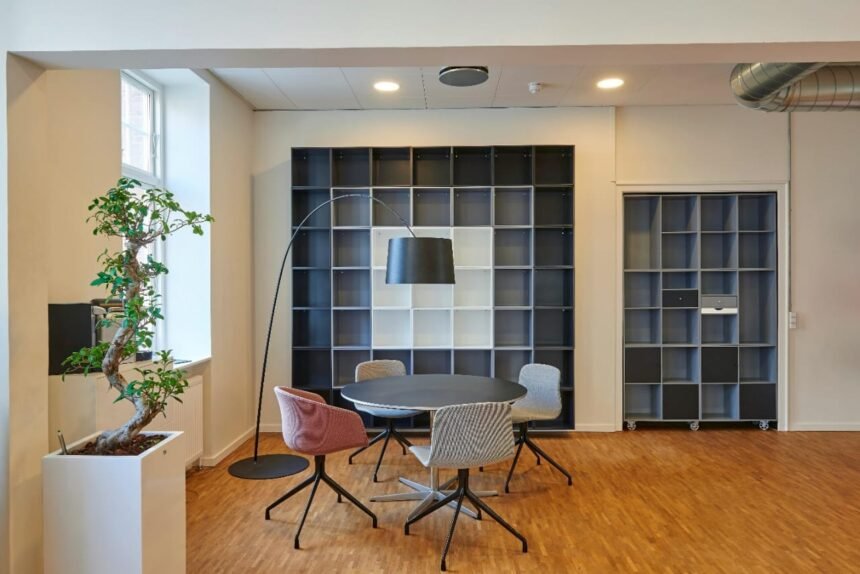Planning a commercial office renovation can be a daunting task, especially in a bustling city like Tampa, Florida. A well-executed renovation can transform your workspace, boost employee morale, and create a more productive environment. However, without proper planning and execution, the process can quickly become overwhelming and disruptive.
This article will provide you with essential tips to ensure your office renovation project runs smoothly, stays within budget, and achieves the desired results. From setting clear goals to hiring the right professionals, these tips will help you navigate the complexities of commercial renovations and create a space that meets your business needs.
1. Hire the Right Professionals
Hiring the right professionals is crucial to the project’s success. A skilled team of architects, designers, and contractors can bring your vision to life and ensure that the renovation is completed efficiently and to a high standard.
When selecting professionals, consider their experience with projects similar to yours. An architect or designer who understands the specific needs and challenges of commercial office spaces can provide valuable insights and innovative solutions. Moreover, ensure that the contractors you hire are licensed, insured, and have a good reputation for quality workmanship and reliability.
If you live in Tampa and are planning a commercial office renovation, research reputable firms that specialize in Tampa commercial renovation projects. Look for companies with a strong track record, positive client testimonials, and a portfolio of successful projects.
Communication is key when working with professionals on a renovation project. Schedule regular meetings to discuss progress, address any concerns, and make decisions collaboratively. Open communication prevents hostility and keeps expectations clear.
It’s also important to establish a detailed contract with your chosen professionals. The contract should outline the scope of work, timeline, payment schedule, and any warranties or guarantees. Having a well-defined contract protects both parties and provides a clear framework for the project. By hiring experienced professionals and maintaining effective communication, you can ensure that your commercial office renovation in Tampa runs smoothly and meets your expectations.
2. Budget Wisely and Plan for Contingencies
One of the most critical aspects of planning a commercial office renovation is establishing a realistic budget and preparing for unexpected expenses. Begin by determining how much you can afford to spend on the renovation and allocate funds to different aspects of the project, such as design, construction, materials, and permits. It’s essential to be thorough in your budgeting process to avoid any financial surprises down the line.
Research the costs associated with similar renovation projects in Tampa to get a better understanding of what to expect. This will help you create a comprehensive budget that covers all necessary expenses.
In addition to your primary budget, set aside a contingency fund to cover any unexpected costs that may arise during the renovation. It’s common for renovation projects to encounter unforeseen issues, such as structural problems, delays, or changes in material prices. A contingency fund of 10-20% of your total budget can provide a financial safety net and ensure that the project stays on track even if unexpected expenses occur.
Track your spending throughout the project to ensure that you remain within budget. Regularly review your expenses and compare them to your initial estimates. If you notice any deviations, address them promptly to prevent overspending. By budgeting wisely and planning for contingencies, you can manage your renovation costs effectively and avoid financial stress.
3. Minimize Disruptions to Business Operations
A commercial office renovation can be disruptive to daily business operations, so it’s essential to plan strategies to minimize these disruptions. Start by scheduling the renovation during a period when business activity is typically slower, if possible. This will reduce the impact on productivity and allow employees to adjust more easily to the changes.
Consider implementing a phased renovation approach, where different areas of the office are renovated in stages. This allows parts of the office to remain functional while work is being done in other areas. By dividing the project into manageable phases, you can ensure that business operations continue with minimal interruptions.
Communicate the renovation schedule and plans to your employees well in advance. Keep them informed about the expected timeline, any temporary changes to workspaces, and safety protocols. Providing regular updates helps manage expectations and keeps everyone engaged in the process.
Explore options for temporary work arrangements, such as remote work or setting up temporary office spaces. Remote work can be an effective solution, especially if the renovation involves significant noise, dust, or restricted access to certain areas. Providing employees with the necessary tools and support for remote work ensures that productivity remains high during the renovation period.
4. Focus on Functionality and Flexibility
When planning a commercial office renovation, it’s essential to prioritize functionality and flexibility in your design. A well-designed office should not only look good but also support the needs of your employees and business operations. Consider how the layout, furniture, and technology will impact workflow and productivity.
Begin by assessing your current office space and identifying any pain points or areas for improvement. For example, if employees frequently complain about noise levels, consider incorporating soundproofing solutions or creating designated quiet zones. If collaboration is a key aspect of your business, design open spaces that encourage teamwork and communication.
Invest in versatile furniture that can be easily reconfigured to accommodate different needs. Modular desks, movable partitions, and flexible seating arrangements allow you to adapt the office layout as your business evolves. This flexibility ensures that your office remains functional and efficient, even as your team grows or your needs change.
Integrate technology into your office design to enhance productivity and streamline operations. This can include installing smart lighting systems, upgrading to high-speed internet, and incorporating wireless charging stations. A tech-friendly office not only improves efficiency but also creates a modern and attractive workspace for employees and clients.
By focusing on functionality and flexibility, you can create a commercial office space that meets the needs of your business and provides a comfortable and productive environment for your employees.
Conclusion
Planning a commercial office renovation in Tampa can be a complex and challenging process, but with the right strategies and preparation, you can achieve a successful outcome.
Remember, effective planning and open communication are key to smoothly navigating the renovation process. With these tips, you can ensure that your office renovation project meets your business needs and creates a positive and inspiring environment for your team.
Also Read: Enjoying Your Pool All Year Long with a Pool Enclosure



